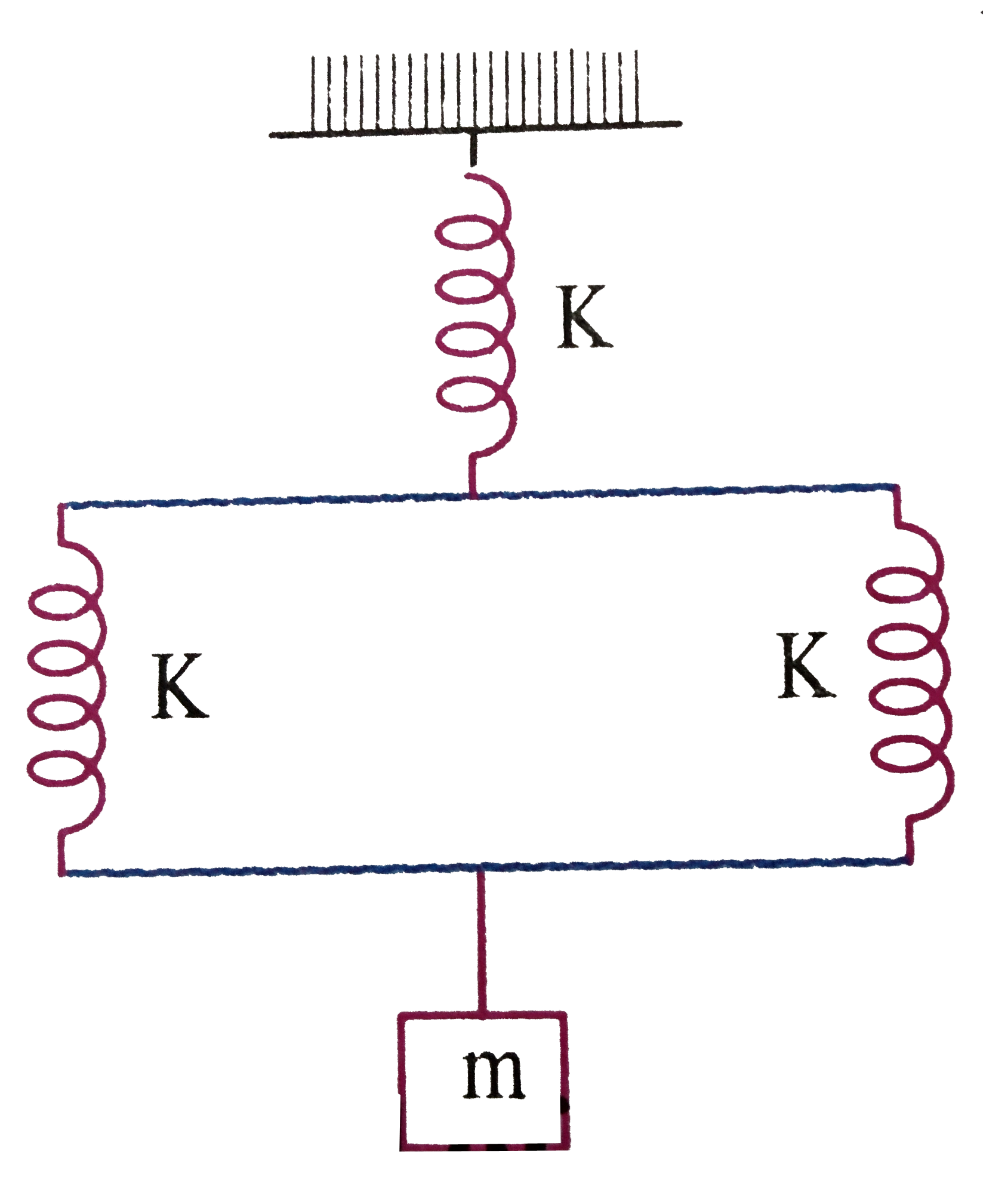A body of mass m=0.50kgis suspended from a rubber cord with elasticity coefficient k=50N/M. Find the maximum distance over which the body can be pulled down for the body's oscillations to remain harmonic. What is the energy of oscillation in this case ?
The correct Answer is:0.098m,0.24J.
Step by step video, text & image solution for A body of mass m=0.50 kg is suspended from a rubber cord with elasticity coefficient k=50N//M. Find the maximum distance over which the body can be pulled down for the body's oscillations to remain harmonic. What is the energy of oscillation in this case ? by Physics experts to help you in doubts & scoring excellent marks in Class 11 exams.
Updated on:21/07/2023Topper's Solved these Questions
- SIMPLE HARMONIC MOTIONBook:NN GHOSHChapter:SIMPLE HARMONIC MOTIONExercise:Eexercies
Explore 39 Videos
- SIMPLE AND COMPOUND PENDULUMBook:NN GHOSHChapter:SIMPLE AND COMPOUND PENDULUMExercise:Exercise
Explore 24 Videos
- SPECIFIC HEAT CAPACITY OF GASESBook:NN GHOSHChapter:SPECIFIC HEAT CAPACITY OF GASESExercise:All Questions
Explore 17 Videos
Similar Questions
A body of mass 1kg is suspended from a weightless spring having force constant 600N/m. Another body of mass 0.5kg moving vertically upward hits the suspended body with a velocity of 3.0m/s and get embedded in it. Find the frequency of oscillations and amplitude of motion.
View SolutionA spring has a natural length of 50 cm and a force constant of 2.0×103 Nm−1. A body of mass 10 kg is suspended from it and the spring is stretched. If the body is pulled down to a length of 58 cm and released, it executes simple harmonic motion. The net force on the body when it is at its lowermost position of its oscillation is (10x) newton. Find value of x. (Take g=10m/s2)
View Solution
Knowledge Check
A body of mass 50 kg has a volume 0.049m3. The buoyant force on it as
A50 kg fB50 NC49ND49 kgfA body of mass 0.1kg is suspended at a height of 1m about the ground by a weightless string which passes over a frictionless pulled, Fig. The velocity with which the body strikes the ground is
 A1120ms−1B2011m/sC1011ms−1D1110ms−1
A1120ms−1B2011m/sC1011ms−1D1110ms−1A body of mass 2kg is projected vertically upwards with a speed of 3m/s. The maximum gravitational potential energy of the body is :
A18 JB4.5 JC9 JD2.25 J
On compressing a spring by 0.5 m, a restoring force of 20 N is developed. When a body of mass 5 kg is placed on the spring, then calculate the (a) force constant of the spring.
(b) the distance through which the spring is depressed under the weight of the body.
(c ) the period of oscillation of the spring if the the body is pushed down and then released.
View SolutionA body of mass 1.0 kg is suspended from a weightless spring having force constant 600Nm−1. Another body of mass 0.5 kg moving vertically upwards hits the suspended body with a velocity of 3.0ms−1 and gets embedded in it. Find the frequency of oscillations and amplitude of motion.
View SolutionA body of mass 12 kg is suspended by a coil spring of natural length 50 cm and force constant 2.0×10Nm−1. What is the stretched length of the spring ? If the body is pulled down further stretching the spring to a length of 59 cm and then released, what is the frequency of oscillation of the suspended mass ? (Neglect the mass of the spring).
View SolutionA body of mass m is suspended from three springs as shown in figure. If mass m is displaced slightly then time period of oscillation is

View SolutionThe gravitational potential energy at a body of mass m at a distance r from the centre of the earth is U. What is the weight of the body at this distance ?
View Solution
